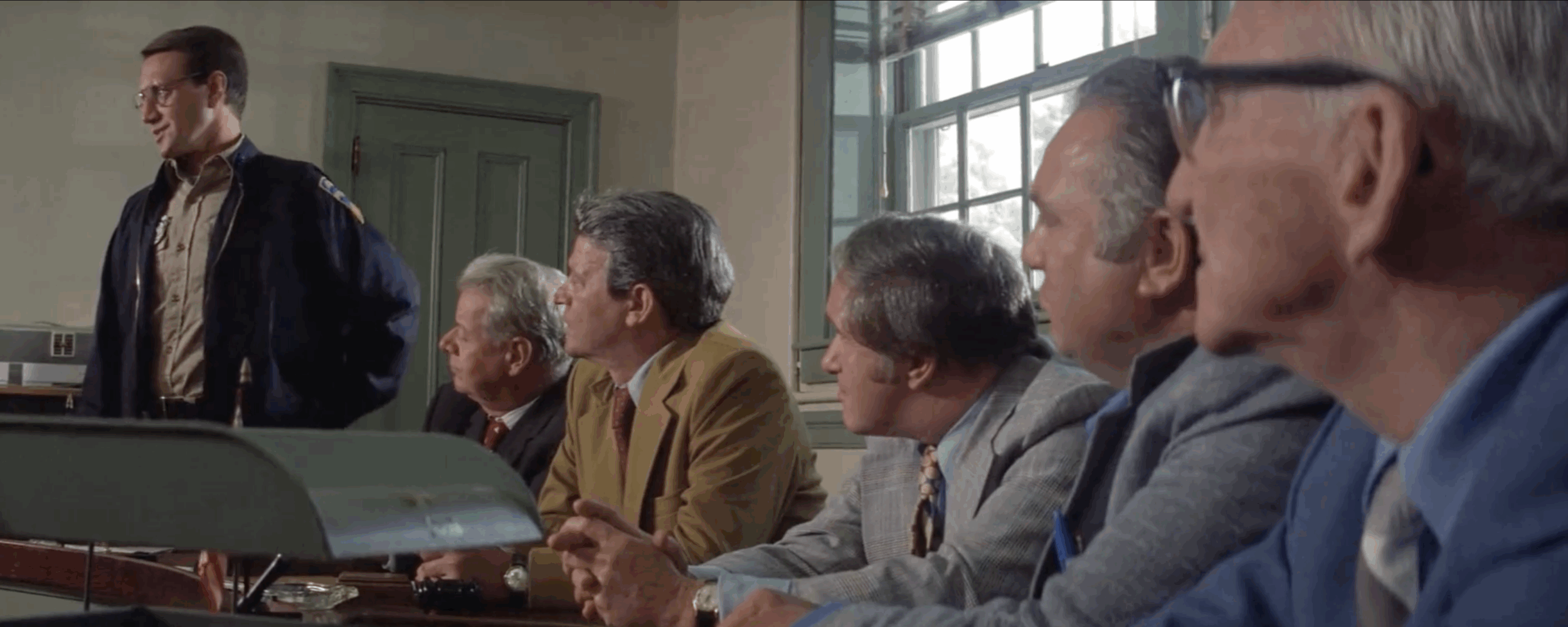When people talk about the cinematography in Jaws, most point towards the dolly zoom which was influenced heavily from Vertigo (Hitchcock, 1958). I think what is so key to this scene and other uses of cinematography in the film is how they purvey their own emotion onto the film. This certain camera shot shows the sense of dread that has just been bestowed upon Brody (Rob Schneider), and also the uncertainty of whats just happened as we the audience are unstabilised by whats just happened. Scenes at the beach position the audience right in the middle of the stampede of people as they rush away from the water, suffocating the audience and preventing them from getting a moment to breathe. In other scenes the camera submerges itself in the water which acts calming as it falls silent and nothing can be seen, but this in itself is what creates the suspense as the silence doesn’t necessarily bring safety. At some points the camera floats in and out of being underwater like it is itself drowning and along with it destabilising the audience. These scenes don’t just purvey emotion of characters, they create emotion in themselves. A great thriller like this film brings the audience along with the emotions of the characters. This can’t be just achieved through narrative and acting, but needs cinematography that creates these emotions for the audience watching.
As highlighted with its influence from Vertigo, the film clearly takes influence from others. Every crime thriller needs a killer and most of the time the audience gets a glimpse of the killers point of view which is also seen here. We see multiple shots from the sharks perspective as it approaches the humans it hopes to munch upon. These shots in themselves always contain a certain amount of voyeurism – they position you in the killers self which brings with it dread but also excitement as you wait for, in this case, the shark to strike again. It creates the juxtaposition of the dread seen from the beach goers as they try to escape, then you a thrown into the perspective of the shark which has no care to any human emotion and is just thinking about their next meal. Even a film he made a few years earlier seemed to have a big influence on this one. Steven Spielberg made Duel in 1971 which is a simple concept about a tanker chasing down a car for pretty much the full running time of 90 minutes. It shows how Spielberg can create great suspense out of the most unlikely of situations, which in itself draws heavily from The Birds (Hitchcock, 1963) that uses an every day scenario and pushes it to the max to create unnerve from the idea of the worst possible situation. At the point of Jaws, Spielberg is more than capable of making the last half an hour of the movie just about the ‘final battle’ of the three main characters against the deadly shark. It takes the full length of this time for the shark to be defeated but throughout it you are gripped and never feel like it is dragging on. A shark attacking three humans feels like it is bringing on the end of humanity, it brings in the emotions of the characters to represent something bigger than itself in the same way The Birds does.
